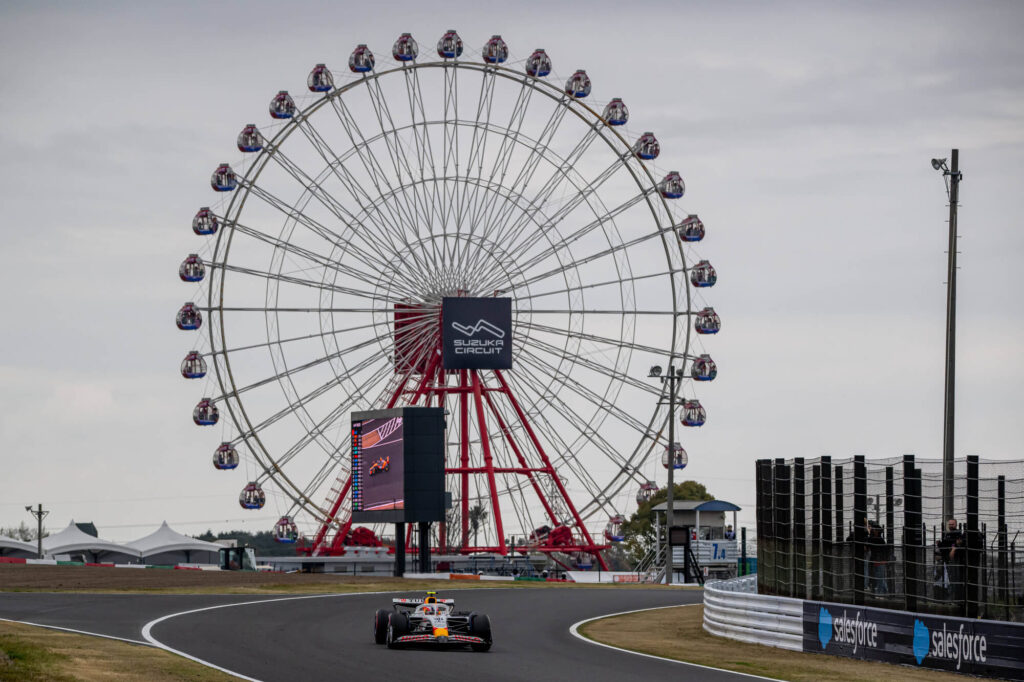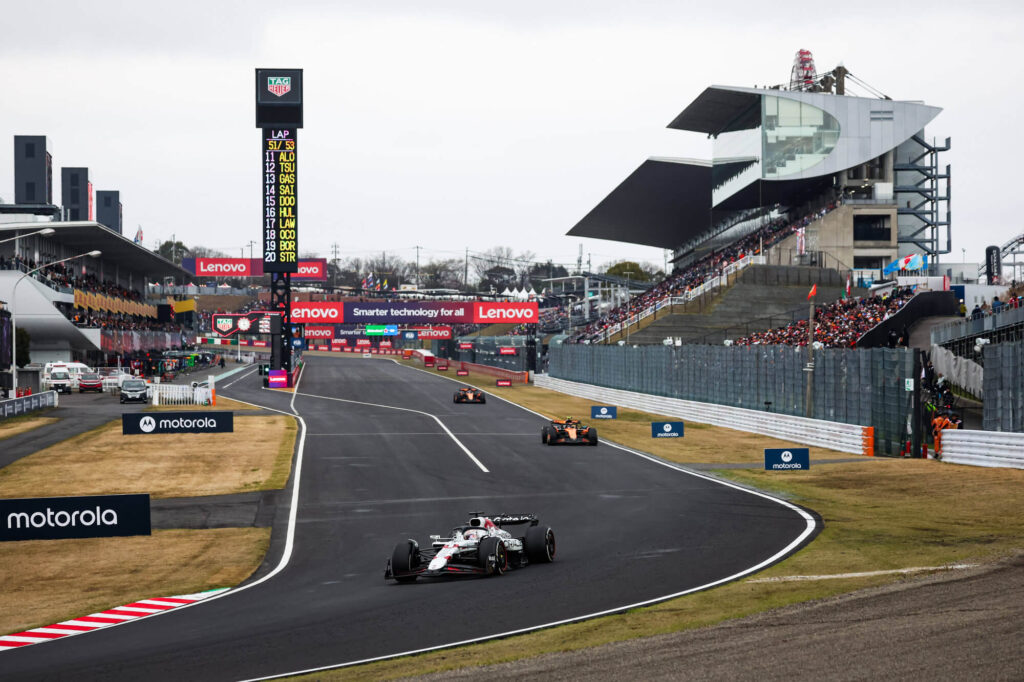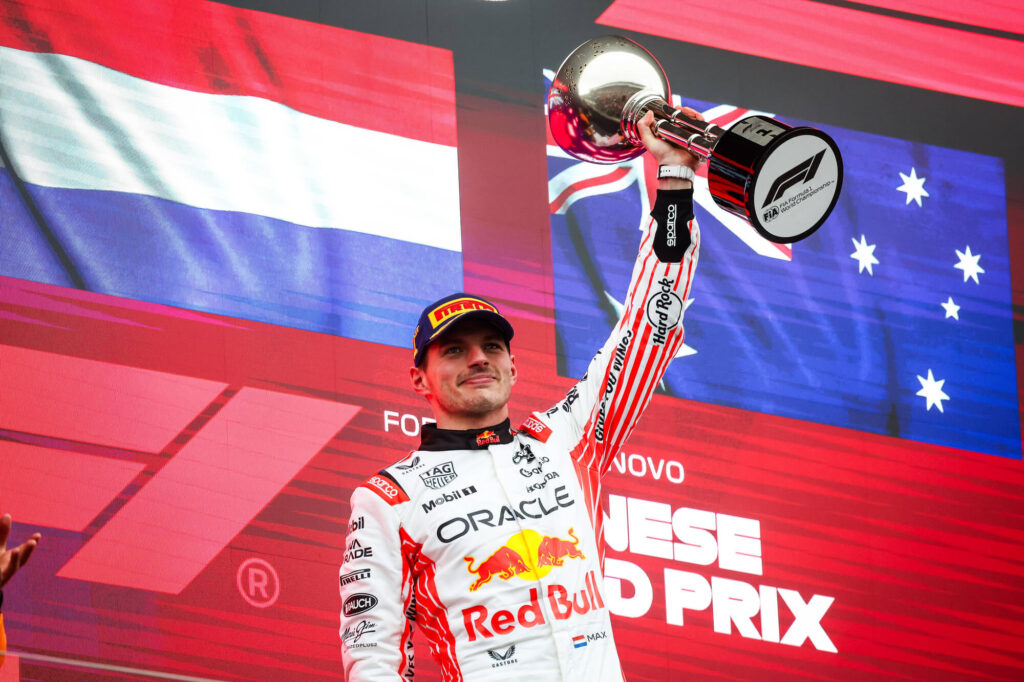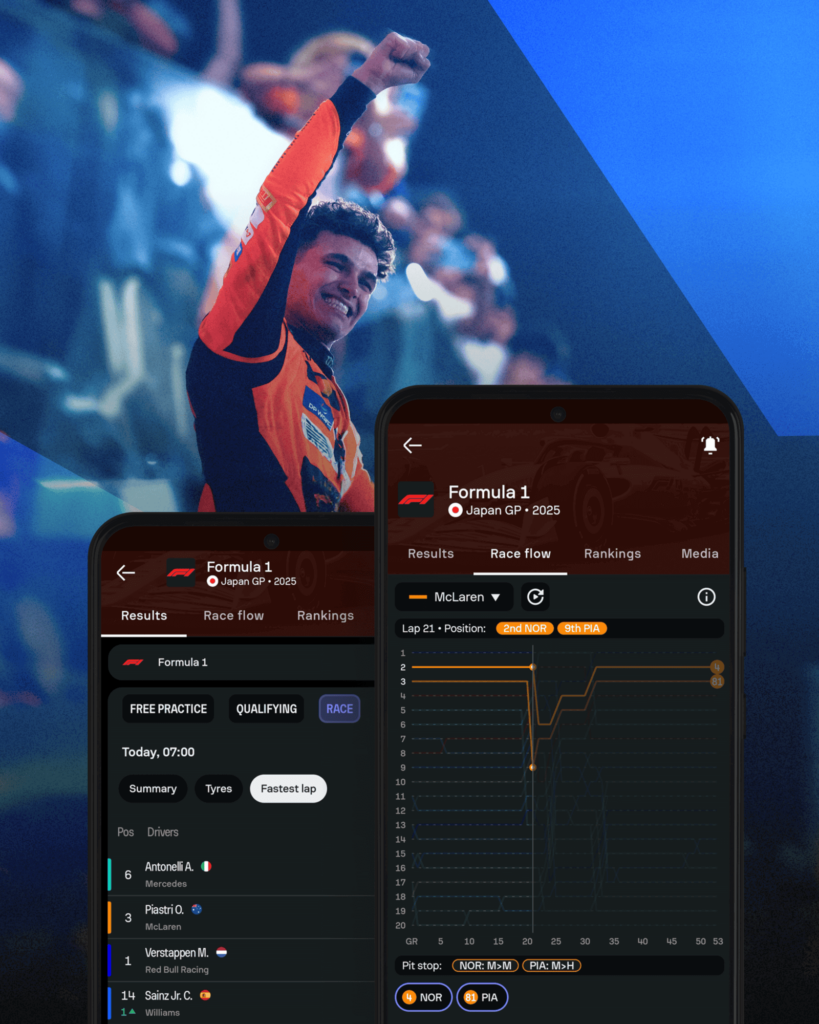The third round of the 2025 Formula 1 World Championship took us to one of the sport’s most iconic and technically demanding circuits — the Suzuka International Racing Course. The Japanese Grand Prix delivered once again, with its legendary corners setting the stage for wheel-to-wheel battles.
This weekend also marked a major milestone for F1 coverage on the Sofascore platform, with a brand-new set of features that bring fans closer to the action than ever before. From the all-new Race Flow — a dynamic visual that tracks position changes and pit stops from lights out to the checkered flag — to live tyre change updates and detailed results from Free Practice 1 all the way to the race finish, Sofascore now covers every twist and turn of the F1 weekend. In this review, we break down all the key moments from Suzuka and what they mean for the rest of the season.
Free Practice Sessions
The weekend began with Free Practice Session 1, with a positive impact. McLaren showed signs of a competitive package upon entering Japan, with Norris posting the fastest time in Session 1. He was followed by George Russell in the Mercedes and Charles Leclerc in the Ferrari. The session was largely smooth, allowing teams to test both soft and medium compounds in relatively stable track conditions.

Later that afternoon, Free Practice 2 (FP2) turned chaotic. Oscar Piastri topped the charts in a McLaren 1-2, with Norris close behind. The surprise of the session was Isack Hadjar from Racing Bulls, who clocked the third-best time, continuing to impress in his debut season. However, the session was plagued by four red flags:
- Jack Doohan of Alpine had a massive crash at Turn 1, severely damaging his car and raising safety concerns.
- Fernando Alonso spun into the gravel at Turn 8, halting his run prematurely.
- Two separate grass fires around the circuit disrupted the session’s flow.
Despite these incidents, McLaren looked dialed in, while Red Bull and Ferrari focused on longer runs and tire management.
On Saturday morning, Free Practice 3 (FP3) was less eventful. The session provided teams with a final chance to fine-tune their cars ahead of Qualifying. Pisatri, Norris and Russell finished in the top 3 with Leclerc and Max Verstappen following them. While no standout times grabbed attention, the data gathered would prove crucial for tire strategy in Sunday’s race.
Qualifying
Qualifying on Saturday afternoon delivered a nail-biting battle for pole. Max Verstappen, ever the master of single-lap pace, clinched pole position with a blistering lap of 1:26.983, narrowly edging out Norris by just 0.012 seconds. The front three were separated by less than half a tenth, with Oscar Piastri clocking in 0.044 seconds behind Verstappen. Leclerc and Russell took P5 and P6 respectively. Kimi Antonelli continued his form taking P6 and the big surprise in the top 10 was Hadjar, qualifying in P7 for Racing Bulls.
Further down the order, Lewis Hamilton qualified 8th, struggling with rear-end grip throughout the session. Alexander Albon and Oliver Bearman qualified in P9 and P10. Yuki Tsunoda, in his home Grand Prix driving for Red Bull, faced heartbreak after being knocked out in Q2, ending up in 15th. Still, the qualifying pace of the top teams suggested a close fight for victory was on the cards.

Main Race
Race day on April 6 dawned bright and clear, with perfect racing conditions. For the first time this season, all 20 cars finished the race, with no safety cars or retirements — a testament to the circuit’s high-speed challenge and driver discipline.
Start & Opening Laps
Verstappen had a clean launch off the line, managing to retain his lead into Turn 1. Behind him, Norris slotted into second while Piastri held off Leclerc in a tight battle. The front three began pulling away from the rest of the field, trading fast laps early on. Hamilton overtook Hadjar in P7 in the 6th lap, and managed to maintain the place. Antonelli had a strong start, gaining a position and holding firm in the top six. Ollie Bearman also impressed in the Haas, climbing into the points early on.
Pit Stops and Strategy
The race revolved around strategic tire calls. All drivers except for Lance Stroll opted for a single stop strategy, mostly alternating between the medium and hard compounds. Among these drivers, Carlos Sainz Jr., Jack Doohan and Liam Lawson were the only drivers to use soft tyres in the race.
The biggest drama happened when Verstappen and Norris entered the pits on the same lap. They exited the pits and were side by side down the pit exit, almost colliding. On both counts they showed very good car control, and Verstappen barely held onto his position. McLaren had the second stint perfectly timed for an undercut; Norris came close to reducing the gap to Verstappen to under a second. But it was Red Bull’s race pace over and above Verstappen’s capability of managing the tires that saw him once again returning to the lead.
Last Race Flurry
Antonelli became the youngest driver to “lead” a Grand Prix in F1 history, as he took charge temporarily during the pit cycle in the last stint. He also set the fastest lap, showcasing the raw talent that has Mercedes excited about the future. Despite pressure from the McLarens, Verstappen remained composed, managing a gap of 1.5 to 2 seconds throughout the final 10 laps.

Race Result
Verstappen won the race, the first this season and his 4th consecutive win on the track, ahead of the McLarens. Norris and Piastri finished 2nd and 3rd, scoring a double podium for McLaren. Leclerc, Russell and Antonelli followed in 4th, 5th and 6th places. Hamilton finished in 7th pushing Hadjar to the 8th, the only change in the top 10 from the starting grid. Albon of Williams and Bearman of Haas rounded off the point scorers, with Antonelli being awarded the fastest lap.
New Sofascore Features
Sofascore’s latest Formula 1 update introduces a powerful new tool for motorsport fans: the Race Flow feature. This real-time visual timeline captures the complete progression of a Grand Prix, showing position changes for every driver, lap by lap. Whether it’s a bold overtake, a strategic pit stop, or a costly mistake, Race Flow lets users instantly understand how the race unfolded.

For fans tracking team and driver performance, it offers an easy way to compare different race strategies and see who gained or lost the most positions at any stage. Complementing this, Sofascore now includes live tyre change updates — a key detail for analyzing race tactics, tyre degradation, and stint management. From Free Practice 1 to the final lap of the Main Race, the platform now provides detailed F1 data in one place. Whether you’re commuting, multitasking at work, or catching up on the go, Sofascore’s new F1 features keep you fully informed, offering deep insights even when you can’t watch the race live.
Driver Profiles: Full Career Stats at Your Fingertips
Beyond live race coverage, Sofascore also offers in-depth career statistics for every Formula 1 driver directly on their profile. Fans can explore each driver’s full racing history, including the total number of races entered, podium finishes, Grand Prix wins, and pole positions. Whether you’re checking the current grid or revisiting past legends, Sofascore provides a clear and comprehensive view of each driver’s achievements across seasons — all in one place. It’s the perfect tool for comparing all-time greats, rising stars, and current championship contenders.
Looking Ahead
The Japanese Grand Prix has shifted the momentum of the 2025 season. Lando Norris still leads the Drivers’ Championship, but now just a point away from Verstappen. Oscar Piastri continues to mature into a top-tier competitor, with the Mercedes’ pair of Russell and Antonelli currently in 4th and 5th places in the WDC.
The season moves next to the Bahrain GP. With only one point separating the top two in the championship and several teams now showing race-winning pace, the 2025 title race is heating up to be one of the most closely fought in years.
